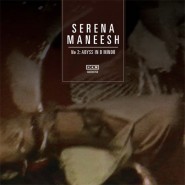 Serena-Maneesh
Serena-ManeeshS-M 2: Abyss in B Minor
Score: 55
Norwegian shoegaze band Serena-Maneesh is certainly not the fastest group when it comes to record production. Their first release arrived in 2002, but it took until 2005 to release an LP, with one other EP punctuating those three years. Of course, that only serves to make their second LP, which was released on the 22nd, all the more important a release for the band. Unfortunately, while Serena Maneesh had a number of very strong tracks, especially for as polarizing a genre as shoegaze, Serena Maneesh 2: Abyss in B Minor is not as strong an album.
As with Serena-Maneesh’s debut album, vocal duties on S-M 2 are shared by frontman Emil Nikolaisen and his sister Elvira. While this sibling duet provides variation to the album’s vocals and by connection to the album as a whole, flaws in both singers’ performances contribute greatly to the album’s limited success. While vocals have always been, at least to some degree, a weakness for Serena-Maneesh, on S-M 2 it’s gotten worse. Both voices have become even more breathy, and Emil’s voice falls all too often into an aimless drone.
Vocal mediocrity certainly isn’t improved by the music’s overall lack of direction - while shoegaze as a genre prides itself on the creation of an undercurrent of sound, for that to really work the music needs to be going somewhere, rather than floating amongst itself in an amorphous cloud. This is a self-perpetuating problem - the vocals aren’t helped by this issue, and their lack of purpose certainly doesn’t help to fix it. Instead, due to the vocal weaknesses as well as the lack of interesting lyrics (the lyrics on S-M 2 feel more like filler than anything else), the album is greatly weakened.
While nothing on Serena Maneesh 2: Abyss in B Minor even nearly matches “Drain Cosmetics” (from Serena Maneesh), there are still some pretty decent tracks on S-M 2. The best of the album are the more active, highly stylized tracks like the opener and “Blow Yr Brains in the Mourning Rain,” which develop a strong, almost catchy backbone, continuously built on top of that theme, and have fewer vocal interruptions than the rest of S-M 2. Additionally, it must be said that Serena-Maneesh uses extremely heavy electronic effects to enormous success, both on the vocals and instrumentals, to enough of an extent that overdistortion was even used as an acceptable substitute for repeated strumming.
But at the same time, about half of the rather short album was really not all that great. Some tracks were fairly boring and overconsumed by the generally harmful use of vocals on the album. Others went on a surprising tangent, away from the standard sound of both the band and S-M 2. While this in itself is certainly not a bad thing, it becomes instantly clear when you listen to them that Serena-Maneesh normally sticks pretty closely to its standard for a reason. Especially with an album as short as S-M 2, it’s essential that each track help the album along, and that’s simply not what happened with S-M 2
At the end of S-M 2, it’s hard to feel like much was accomplished. Not quite forty minutes of musical waffling after the album’s opening (and by far best) track, “Ayisha Abyss,” we’re left in much the same place as we were after Serena-Maneesh’s debut album - somewhat disappointed while at the same time interested by the bits of creativity that poke through the majority of the album. Serena Maneesh 2: Abyss in B Minor is never terrible and never excellent. Mostly, it’s thoroughly mediocre, in some ways as disappointing as an awful album, and much less satisfying than a genuinely good one.
This post is tagged 50-59, Serena-Maneesh